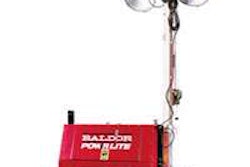Leaning Against the Recovery Consensus Wind
Housing sector – slow in 2010, “dynamic” in 2011, according to PCA
By John Latta
The ugly home building market is finally weakening its death grip on the struggling economy.
A reviving residential construction sector will of course help the other construction sectors begin to recover too. But when?
The Portland Cement Association (PCA) believes the residential sector’s adverse impact on cement consumption has run its course, but unlike other major pundits, sees only a tepid increase in residential construction activity during the latter half of this year. More substantive gains, says PCA, will not come until 2011 and beyond.
The prediction comes from PCA’s chief economist Ed Sullivan, one of the construction sector’s best seers. The confident Sullivan concedes he is out of kilter with other organizations that are well-versed in the history and data of residential construction. PCA projects a 14.4 percent jump in housing starts this year. That sounds like a reasonable number but it reflects an increase over miserable 2009 levels. The increase will come, he predicts, from a 20 percent increase in single family starts and a 5.7 decline in multifamily home starts.
“These projections lie well below the consensus of construction economists’ expectations,” concedes Sullivan.
The National Association of Homebuilders (NAHB)sees a 25.6 increase, 2010 over 2009, in total housing starts, the National Association of Realtors (NAR) predicts a 37.3 percent increase and the Mortgage Bankers Association (MBA) foresees a 33.4 percent lift, according to PCA.
“At issue is the timing of the recovery. PCA continues to believe that several significant hindrances specific to the housing sector will remain in play throughout 2010 leading to a delay and more muted improvement in the residential sector compared to the consensus national averages.
“In our view, it is likely that 2011 will be characterized by a dynamic recovery in residential,” says Sullivan. “Upon review of the structural factors that will bring about a strong recovery in housing there may be reason to lean against the wind of consensus.”
In fact PCA is way ahead of all but one prediction from the other groups already cited when it comes to 2011 starts. PCA sees total housing starts for 2011 at 48.4 percent higher than this year. The NAHB prediction is 49.4 percent, NAR 40.0 percent and MBA 38.0 percent, according to PCA.
A decent jump in housing starts won’t happen until two critical conditions are met, says Sullivan. We need an inventory of unsold new homes that is no more than a five month supply, and we need stable or rising prices. And, he says, we have neither. There’s an almost 8 month inventory and prices are in the tank. And change isn’t coming soon, he says, because of our present lingering malady of “weak economic growth, high unemployment, likely increases in foreclosure activity, fire sale pricing of bank possessed properties, which acts as a depressant on new home pricing, and the continuation of tight lending standards.”
The question to answer then, is just when future conditions will have changed to the point where we can expect a significant acceleration? There are, says Sullivan, six key factors to consider when trying to figure out the answer.
 One: Weak labor markets will hinder a significant and sustained increase in 2010 new home building.
One: Weak labor markets will hinder a significant and sustained increase in 2010 new home building.
“Stabilization of labor markets is the critical ingredient that eventually leads to an improvement in the underlying fundamentals for residential activity,” says Sullivan. “Without a sustained improvement in labor market conditions, it is unlikely that any notable increase in sales activity will materialize.” PCA sees job losses stopping this quarter, followed by an even period then, early in the third quarter, the beginning of a series of steady quarterly improvements.
Two: Homebuyer tax credits may result in a payback in sales during the second half of 2010, moderating perceived momentum.
The dynamic of tax credits as economic stimuli is at work here according to Sullivan. An acceleration in home sales and the resulting drop in inventory that occurred late last year created some optimism. But, pouring cold water on it, Sullivan says that while economic conditions were not as bad as they were in the first part of the year, the sales mini-boom “may owe a substantial amount of credit to the homebuyer tax credit” and its originally-planned expiration in November. “Tax credits work,” he says. “Tax credits work best when there is an urgency to act before the deal expires.”
But the auto industry shows us, says Sullivan, that tax credits boost sales in two ways: they make sales that would otherwise not have been made and they bring forward sales that would have been expected in the months ahead. Then sales stall and fall back into what he calls a ‘payback’ period.
“The expected payback from the first round will be muted due to the extension of tax credits during the first quarter. Sales will again accelerate in the second quarter as the credits are schedule to expire. Months supply of inventory will be reduced. Then what? Payback.”
 Three: Foreclosure activity is likely to accelerate during the first half of 2010, adding to inventories.
Three: Foreclosure activity is likely to accelerate during the first half of 2010, adding to inventories.
PCA expects foreclosures will increase in the first half of this year primarily because of weak labor markets (high unemployment drives up foreclosures), the end of foreclosure moratoriums as lenders work through huge foreclosure backlogs and poor home prices. Of that last factor Sullivan points out that “according to some reports, roughly one quarter of home loans are underwater (the mortgage value exceeds the prevailing home value) and people with such loans have less incentive to keep making mortgage payments.”
Four: Increase in bank possessed properties will hinder an improvement in new home prices.
“As banks catch up and work through the backlogs generated by moratoriums, the possession rate will increase. PCA expects the rate will range between 36 and 42 percent. This implies roughly 1.3 million additional homes will be held by banks during 2010, compared to 871,086 in 2009.
“Banks offer substantial discounts below prevailing market prices to remove the financial liabilities of possessed homes from their books. These homes, some nearly new, compete directly with new homes for the homebuyer, putting downward pressure on new home prices.”
Five: Lending conditions are likely to remain a hindrance during much of 2010.
According to PCA the critical issue facing the economy is not the amount of capital that’s available but rather business and consumer access to it. “It is likely that bank’s aversion to risk will diminish only after charge-offs for loans show a sustained pattern of decline,” according to Sullivan. And that, he says, will probably start to happen six to nine months after labor markets stabilize.
Six: Trigger points may be delayed, suggesting less upside risk compared to consensus.
“Compared to consensus,” says Sullivan, “the potential for slower than expected sales, higher than expected inventories and a weaker than expected pricing environment suggest the potential for a delay in homebuilders reaching the trigger point signal to accelerate single family home building.” v
“A quicker than expected healing.” Maybe.
PCA chief economist Ed Sullivan says flatly that “the recovery in U.S. economic growth cannot be sustained without a stabilization in labor markets and job creation.”
There is evidence, he says, that the job creation process has already begun and the labor market’s performance has outperformed previous PCA projections. “If sustained, this may suggest a quicker than expected healing in the underlying fundamentals surround construction.”
These slightly stronger than previously projected PCA labor market activities could:
Reduce state deficits in 2010 leading to smaller drags on public construction activity.
Reduce the level of vacancy rates, soften the declines in leasing rates and reduce the declines in expected ROIs for commercial properties – leading to the potential of a quicker recovery in non residential construction.
Improve the outlook for single family construction activity in 2010 and 2011
Shorten the period for an easing in lending standards.
Mike Anderson’s American Iron
 What’s Next Down The Road?
What’s Next Down The Road?
Editor-in-Chief John Latta and I, as two folks just returned from an equipment trade show are apt to do, were thinking out loud about what Company A or Company B might do next. Who is going to buy what? Who might sell off this? Who’s in bed with whom? And so it goes for those of us who enjoy nothing more than learning what’s the next move for the makers, sellers, buyers and users of the gear that makes, breaks and shakes our highways.
As the conversation so often leads, “What about Volvo?” John tossed my way, that coy gleam in his eye, knowing all too well I’d take a big, wild swing for the fences on that pitch.
And, sure enough, I was off … recounting the former Michigan wheel loaders, the former Samsung excavators, the former Champion Road Machinery motor graders, the former Ingersoll Rand pavers, etc., etc. Heck, at one point, my eyes glazed over, I even muttered something about the old SuperPac rollers and Scat Trak skid steers, I think.
What about a dozer? Yes, indeed, what about a dozer? Volvo Construction Equipment’s leaders vowed a number of years ago to evolve the company into a full-line player and have pretty much accomplished just that, but when and how will it add the cornerstone tractor line? We’ll see.
And, moving forward, we’ll certainly enjoy tossing around topics just like that.
Arriving at Better Roads to work alongside two equally passionate journalists, John Latta and Tina Grady Barbaccia, I welcome the opportunity to join in a true industry conversation. Agree or disagree with me, please don’t hesitate to let me know what’s on your mind. Please drop me a line at
Over the past 15 years, I’ve enjoyed a couple of wonderful stops along the road while covering construction equipment and related industries throughout North America. This new home is in a vibrant, invigorating neighborhood, and I encourage all of my neighbors – you – to let me know what’s up.
And what’s up with Volvo? Well, returning to my desk from John’s office, there sat the news from said company that VT LeeBoy will begin supplying commercial pavers and road wideners to Volvo dealers under the historic Blaw-Knox brand, acquired by Volvo in the 2007 purchase of the Ingersoll Rand road machinery business.
Production of the upgraded and redesigned Blaw-Knox PF150 and PF161 wheeled asphalt pavers and the RW100 and RW195D road wideners will begin this year at LeeBoy’s Lincolnton, N.C. facilities. LeeBoy will take full responsibility for product support, including for units already in the field. New units will be marketed under the Blaw-Knox brand, as part of a five-year licensing agreement, and will be distributed through Volvo dealers.
And so it goes. v














